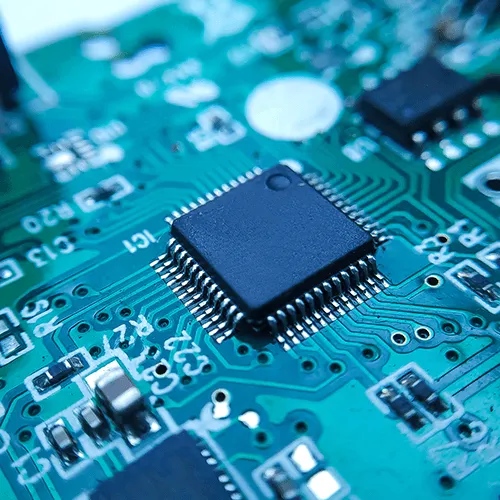Contrary to what some had hoped for and expected, tensions between the U.S. and China have risen further under the Biden administration and the U.S. has taken aggressive steps to decouple from China in the semiconductor industry over the past six months. Part of the U.S. strategy is designed to impede or slow China’s progress in certain advanced technologies that have strategic, national importance. The success of these initiatives depends entirely on the goal. If the aim is to achieve U.S. self-sufficiency in semiconductor design and manufacturing, they will surely fail, but if the goal is diversification the measures should help.
In August 2022, President Biden signed into legislation the CHIPS and Science Act, which will give semiconductor companies $52.7 billion (bn) over five years to encourage them to develop and research semiconductor chips in the U.S. The bill also creates a 25% tax credit to encourage companies to invest in semiconductor manufacturing domestically. In October 2022, the U.S. government also announced export restrictions aimed at hindering China’s development of its own semiconductor producing capabilities.
The semiconductor industry is based on a complex, striated, multilayered global supply chain. Since the invention of the semiconductor at Bell Labs in New Jersey and the birth of the modern semiconductor industry in what is now Silicon Valley, the U.S. has been a major player in semiconductor design. It has retained its lead in areas that rely heavily on research and development, such as chip design, software tools that turn those designs into actual chips and multimillion-dollar machines that etch chip designs onto wafers in fabrication plants. But the actual fabrication of semiconductor chips has been increasingly outsourced to Asia. According to a study by Boston Consulting Group, the U.S.’s share of chip manufacturing has dwindled from 37% in 1990 to only 12% in 2021. Over the same period, China’s share has risen from around zero to 15%. The biggest producers of semiconductors are Taiwan and South Korea, each accounting for just over 20% of global semiconductor capacity.
According to Capital Economics, three of the most cutting-edge manufacturers of sophisticated chips used in computers, smartphones and servers are Taiwan Semiconductor Manufacturing Company (TSMC), South Korea-based Samsung and U.S.-based Intel. U.S. policymakers are rightly concerned about the U.S.’s role in semiconductor chip production. Car makers globally were beset by massive backlogs in car production as a result of chip shortages over the past two years, suggesting that moderate shocks to the global supply chain will quickly cause widespread ripples. Moreover, the concentration of so much chip production in geopolitical hot spots—China, Taiwan and South Korea—could have civil and military ramifications. If China were to dominate sophisticated semiconductors—either on its own or by taking over Taiwan—it could pose a serious threat to U.S. economic and national security.
"Car makers globally were beset by massive backlogs in car production as a result of chip shortages over the past two years, suggesting that moderate shocks to the global supply chain will quickly cause widespread ripples."
U.S. policymakers are motivated to make the U.S. self-sufficient in this crucial technology but it will not be achieved with the CHIPS Act or export restrictions alone. One reason is sheer cost. The U.S. government has earmarked just over $50 bn in the CHIPS Act for the design and production of chips in the U.S., but this is a drop in the bucket relative to overall costs in the sector. A single semiconductor factory can cost around $20 bn to build, with an advanced chip manufacturing tool that imprints circuit patterns on silicon running over $100 million (mn). TSMC’s own expansion plans will require spending $100 bn over the next three years, which VLSI Research estimates is around 25% of the entire industry’s capital spending. According to John Haigh at the Harvard Kennedy School, it could cost $1.2 trillion for the U.S. to totally recreate the infrastructure necessary to design and manufacture semiconductor chips.
The U.S. government hopes that the CHIPS Act will serve as an inducement for private sector capital to flow into the sector for domestic production. This has already been the case; by the end of 2022, around $200 bn in private investments had been announced in the U.S. to increase domestic manufacturing capacity. But setting up to build semiconductors in the U.S. is not particularly cost-efficient. According to TSMC’s founder Morris Chang, costs for building a plant in Arizona could be up to 50% higher than building the same plant in Taiwan. This significant investment comes at a delicate time for chipmakers, which operate in a notoriously cyclical environment with heavy investment required for future chip generations. Aggressive interest rate hikes in the U.S. and Europe have cooled demand for many electronics and chip producers are facing shrinking budgets.
“The U.S. government hopes that the CHIPS Act will serve as an inducement for private sector capital to flow into the [semiconductor] sector for domestic production.”
One of the reasons TSMC’s expenditure is so much higher in the U.S. is training; it sent more than 600 American engineers to Taiwan for training. This belies another impediment to U.S. self-sufficiency in semiconductor production: a shortage in talent. The CHIPS Act includes $13 bn for STEM education programs to attempt to address this issue by creating more of a domestic pipeline. This should help, but it will take years for this training to generate high-level professionals.
The U.S. is reliant on other countries for some crucial inputs to semiconductors as well. The lasers that imprint patterns on silicon wafers require purified neon gas, which is generated in steel production. The steel industry has largely moved out of the U.S. over the past several decades, and most neon gas is produced in Ukraine, Russia and China. Since Russia’s war on Ukraine last year, China has become the world’s primary source. China is also the main provider of tungsten, a rare metal used to build parts of transistors on chips.
The CHIPS Act alone will not succeed in making the U.S. self-sustainable in semiconductor design and production. To help support this effort, the U.S. has also announced export controls to deny China advanced technology. This will only have an impact if the U.S.’s allies also uphold them. South Korea, Taiwan, Japan and the Netherlands are significant manufacturers of chip components. Japan and the Netherlands have agreed to restrict exports of chip manufacturing technology to China. But the Netherlands’ cooperation could be undermined in retaliation for the industrial policy and subsidies in the U.S.’s Inflation Reduction Act. Ultimately the U.S. could threaten to impose sanctions on any of its allies’ companies exporting technology to China, but this would be very complicated to enforce. If U.S. allies do not strictly uphold the export controls, China could circumvent the measures and U.S. firms could simply lose their market share.
The semiconductor industry depends on complex supply chains and the scale of the industry is such that the U.S. cannot produce all the chips it needs on its own. The CHIPS Act will nevertheless help diversify supply so that the U.S. is less reliant on geopolitical hotspots for crucial technology. The support given to domestic production is insufficient to make the U.S. self-reliant in chip design and manufacturing and chip manufacturing in the U.S. will remain relatively inefficient. Export controls aim to hamper China’s progress in producing more sophisticated semiconductors, reducing global competition in the sector. From a macroeconomic perspective, neither the CHIPS Act nor export controls represent ideal policy. On the margin, they will fuel inflation at a time when the global economy is already struggling with inflation that is too high. But given geopolitical tensions and the central role that semiconductors play in both the U.S. economy and national defense, these policies could help reduce macroeconomic and national security risk.





